‘Natural’ alternative to chemicals can control ectoparasites in marine fish broodstock systems
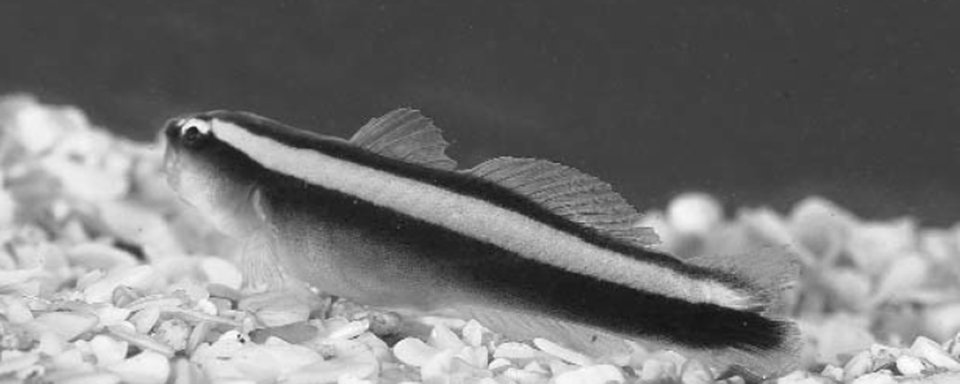
Marine finfish broodstock accumulate parasites during long-term maturation and conditioning. Presence of ectoparasites – primarily on the skin, gills, and buccal cavity – increases stress levels in broodfish, because by attaching to gill tissues parasites decrease the rate of gas exchange, which can interrupt the natural spawning process in fish, and affect egg and larval quality. The use of cleaner fish to minimize ectoparasite infestation through a symbiotic relationship with the host is a viable “natural” alternative to the use of chemicals and drugs in marine fish culture. Techniques for using cultured and wild-caught neon gobies as an alternative control of parasites on broodstock in recirculating systems were recently implemented at the Aquaculture Center of the Florida Keys (ACFK), a marine fish hatchery located in the Florida Keys, USA.
Optional prophylaxis
Several optional prophylaxis techniques are used for the treatment of ectoparasitic infestations. The application of fresh water dips and the use of chemicals have proven effective; however, they involve excessive handling of the fish, and radical environmental changes that can have a negative impact on the fish. For several years, the salmon industry has used several different species of cleaner fish to help control ectoparasitic outbreaks on fish stock.
Neon gobies, parasite control
The neon goby (Gobiosoma oceanops) was selected because of its dependability in culture and superior abilities as a cleaner organism in a mutually beneficial symbiotic relationship with reef fish species. For over 30 years, marine aquarists and hobbyists have been culturing Gobiosoma species.
They are prized for their cleaning abilities and have been used to maintain parasite levels on marine fish in small and large reef aquarium systems. Many behavioral studies in the wild have evaluated the cleaning activities of the neon goby, and shown they are more productive cleaners than other species of fish and shrimp.
Study protocol
Specimens of cultured neon gobies were obtained from Ocean Reef and Aquariums, Inc. (ORA) at the Harbor Branch Oceanographic Institute (HBOI) in Fort Pierce, Florida, USA. Gobies used for cleaning broodstock in this study ranged from 3.5 to 6 cm in length. Mutton snapper (Lutjanus analis) and greater amberjack (Seriola dumerili) were used as hosts for observing the symbiotic relationship with cultured neon gobies. All of the species used in this study exhibit the described behavior in the wild.
Upon arrival at the hatchery, neon gobies were kept in 40-liter containers with 27 degrees C seawater. Cleaner fish are inclined to find protection in their surrounding habitat. Structures made out of perforated 1-in PVC pipe served as artificial habitat inside the acclimation tank. Several different habitat designs are in the process of being tested. Gobies were kept in the 40-gallon tanks for a 10-day period with the intention of familiarizing them to the new artificial shelter.
Freshwater dip before introduction
Before introducing the neon gobies into the broodstock tanks, they underwent a 15-minute fresh water dip for the treatment of parasites. The gobies were then placed inside a plastic bag and introduced into the broodstock system. The plastic bag was positioned towards the middle of the artificial habitat, and several large holes were cut along the sides to allow for the gobies to exit the bag. After four hours, all the gobies had exited the bag and began to acclimatize themselves to their new surroundings.
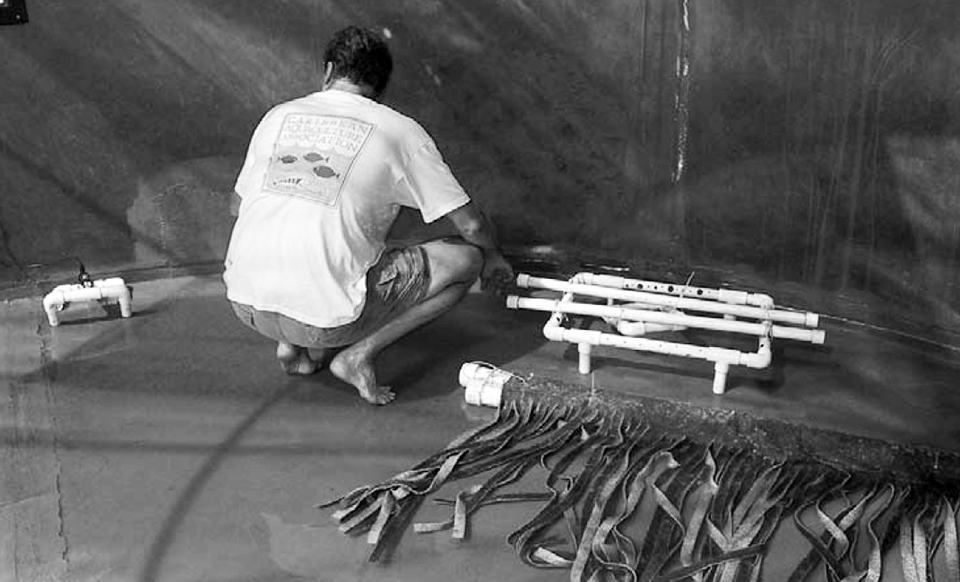
Habitat arrangement
The habitat was arranged in a way that would not significantly interrupt the tank’s flow rate or trap leftover food particles. Also, the habitat was placed against the wall of the tank to keep the gobies from being drawn into the tank’s drainpipe. Throughout the seven-week period of observation, no gobies were collected from any of the system’s filters.
Cleaning inherited behavior
It is important to note that the hatchery-raised neon gobies exhibited cleaning behavior immediately upon their introduction to the broodstock tanks. The behavior was clearly inherited, not learned. Cleaning activities involved the removal of ectoparasites, foreign material and tissue of the hosts, and occurred approximately 30 minutes after introduction of the gobies.
Many parasites removed
A number of species of ectoparasites (sampled from anesthetized broodstock) were preyed upon by neon gobies. Several monogeneans, caligidae and larnaeid copepods, opisthaptor hooks, and various small zooplankters were identified. Parasite samples were obtained from freshwater dip tanks and in the stomach contents of gobies. Seven fish were video-recorded making an average of 24 visits to the habitat during a 12-hour period.
Typical cleaning event
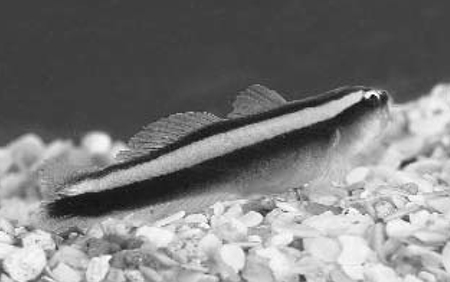
A typical cleaning event involved a client visiting the habitat, where it exhibited an “invitation pose” (head down 45 degrees, tail up). The pose is thought to elicit a cleaning response by the attending cleaner species. When in the “cleaning area” (located one to six inches above the habitat or drain), both snappers and amberjack were observed expanding their gill operculum, a customary activity of marine fish during a cleaning episode. Both fish were also observed convulsing their bodies in association with gobies tearing ectoparasites off. Up to six neon gobies were observed cleansing the entire body of both snappers and jacks during a single cleaning event. When it is necessary to drop the water level of a tank to sample broodstock, it is recommended that the neon gobies be collected when the tank is almost empty. Gobies that were deposited into a tank being refilled did not acclimate to the artificial habitat as well as gobies transplanted in an established tank.
Effective symbiotic relationship
In addition to visual observations, the effectiveness of this symbiotic relationship was determined in several ways. Prior to cleaner fish introduction, numerous detached ectoparasites were found accumulated in the recirculating system’s bag filters. After the introduction of cleaner fish, only an occasional parasite was found in the bag filters.
Conclusion
Both mutton snapper and greater amberjack that were infested with ectoparasites had only a few parasites after four to six weeks of exposure to cleaning stations. Using cleaner fish like neon gobies in broodstock maturation tanks as a form of parasite control has proven an effective alternative to the use of chemical treatments. Our studies indicate that the use of neon gobies to reduce the stress levels of broodstock is a viable option for marine hatcheries. Additional experiments should be attempted to assess the cleaning abilities of other cleaner organisms and their dependability in marine finfish culture.
(Editor’s Note: This article was originally published in the October 2001 print edition of the Global Aquaculture Advocate.)
Now that you've reached the end of the article ...
… please consider supporting GSA’s mission to advance responsible seafood practices through education, advocacy and third-party assurances. The Advocate aims to document the evolution of responsible seafood practices and share the expansive knowledge of our vast network of contributors.
By becoming a Global Seafood Alliance member, you’re ensuring that all of the pre-competitive work we do through member benefits, resources and events can continue. Individual membership costs just $50 a year.
Not a GSA member? Join us.
Authors
-
Scott Zimmerman
University of Miami
MAF Division, RSMAS
4600 Rickenbacker Causeway
Miami, Florida 33149 USA -
Federico J. Rotman
University of Miami
MAF Division, RSMAS
4600 Rickenbacker Causeway
Miami, Florida 33149 USA -
Jorge F. Alarcón
University of Miami
MAF Division, RSMAS
4600 Rickenbacker Causeway
Miami, Florida 33149 USA -
Owen Stevens
University of Miami
MAF Division, RSMAS
4600 Rickenbacker Causeway
Miami, Florida 33149 USA -
William Matzie
University of Miami
MAF Division, RSMAS
4600 Rickenbacker Causeway
Miami, Florida 33149 USA -
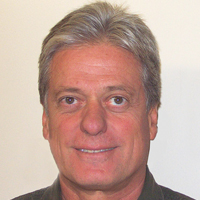
Daniel D. Benetti, Ph.D.
University of Miami
MAF Division, RSMAS
4600 Rickenbacker Causeway
Miami, Florida 33149 USA[117,100,101,46,105,109,97,105,109,46,115,97,109,115,114,64,105,116,116,101,110,101,98,100]
Tagged With
Related Posts
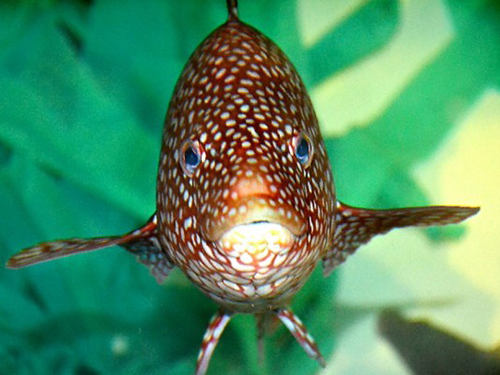
Health & Welfare
Extensive wrasse use keys up ‘cleaner fish’ conservation questions
Few could argue that a reduction in sea lice-fighting chemicals isn't a win for the fish and for the environment. The downside, however, is that increasing numbers of cleaner fish are being caught for use on salmon farms.
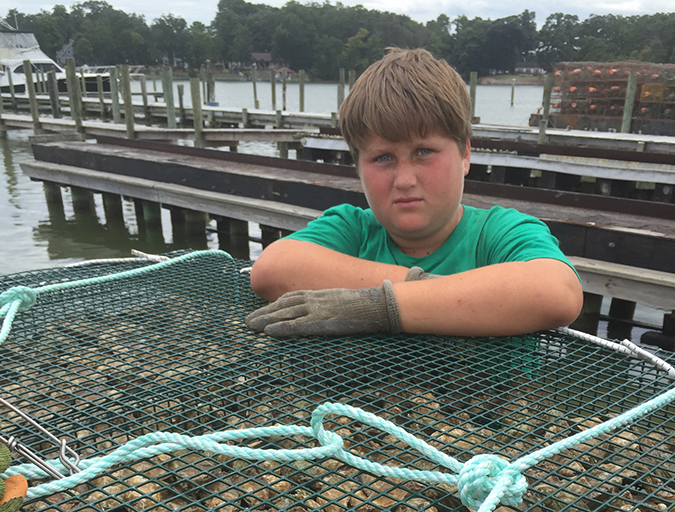
Responsibility
Ailing waterways hail the oyster’s return
The Lower Hudson Estuary and Chesapeake Bay, two waterways once home to thriving oyster beds, would welcome the shellfish’s return. Aquaculture initiatives in both areas aim to reinvigorate the water and the communities they support.
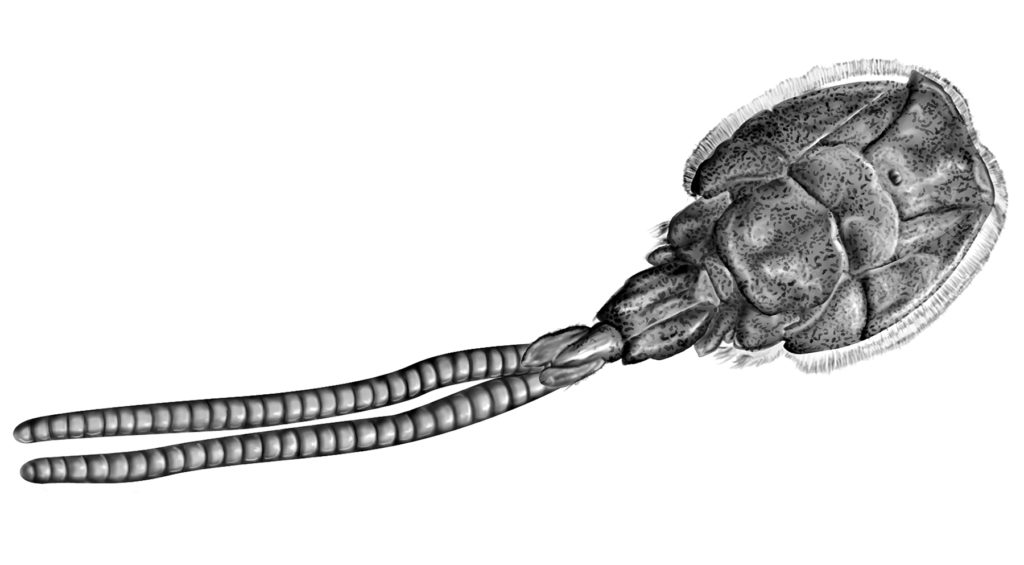
Health & Welfare
Animal health giants have sea lice in their crosshairs
Alltech and Benchmark have been working on the next generation of sea lice solutions and believe they have new products that can help salmon farmers win.
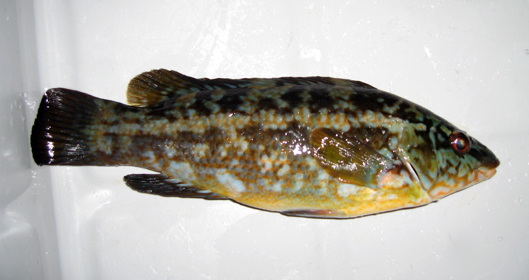
Health & Welfare
Ballan wrasse offer efficient, environmentally friendly sea lice control
The Ecofish project is developing the commercial rearing of Ballan wrasse and methods for use of the fish to control sea lice in cod and salmon cages.



